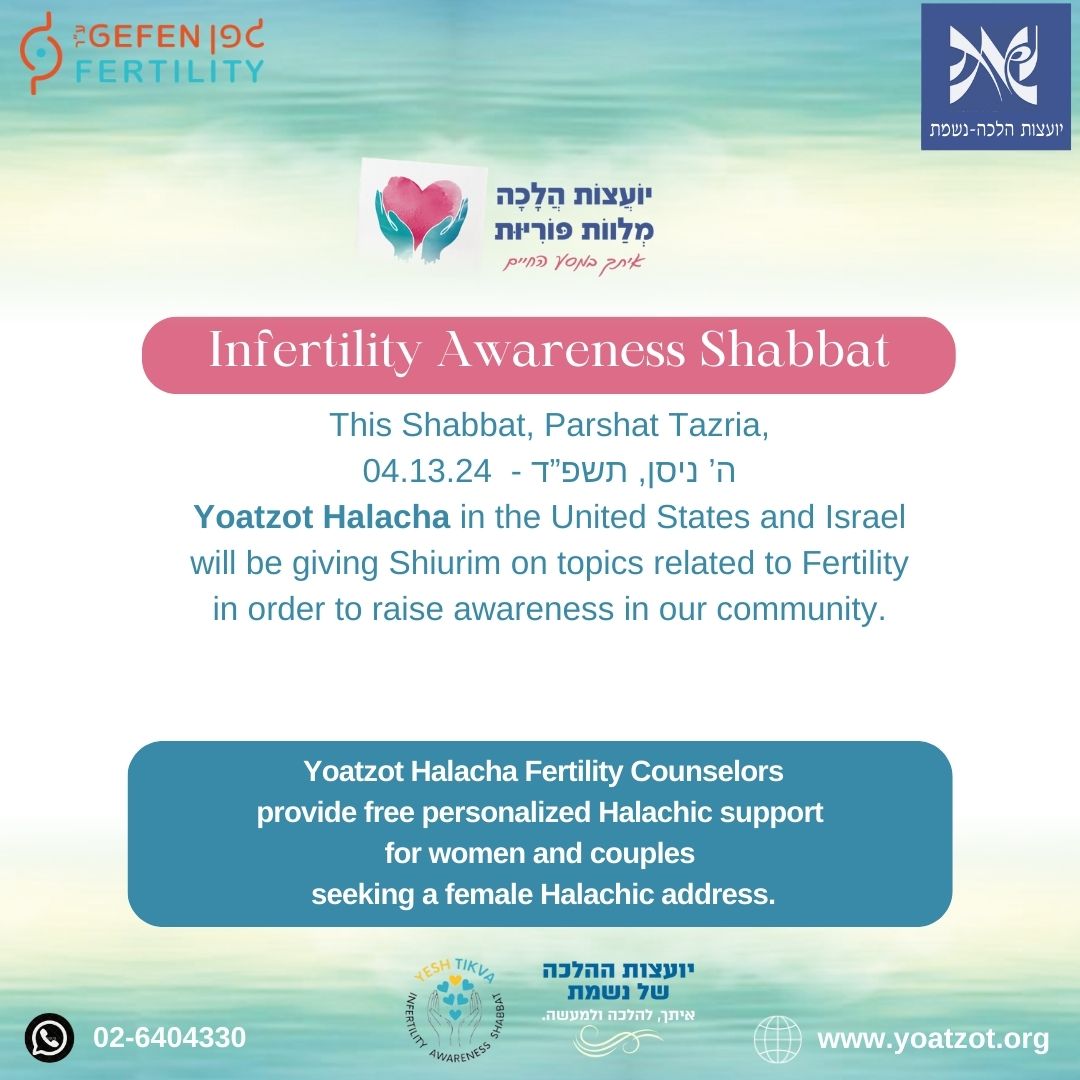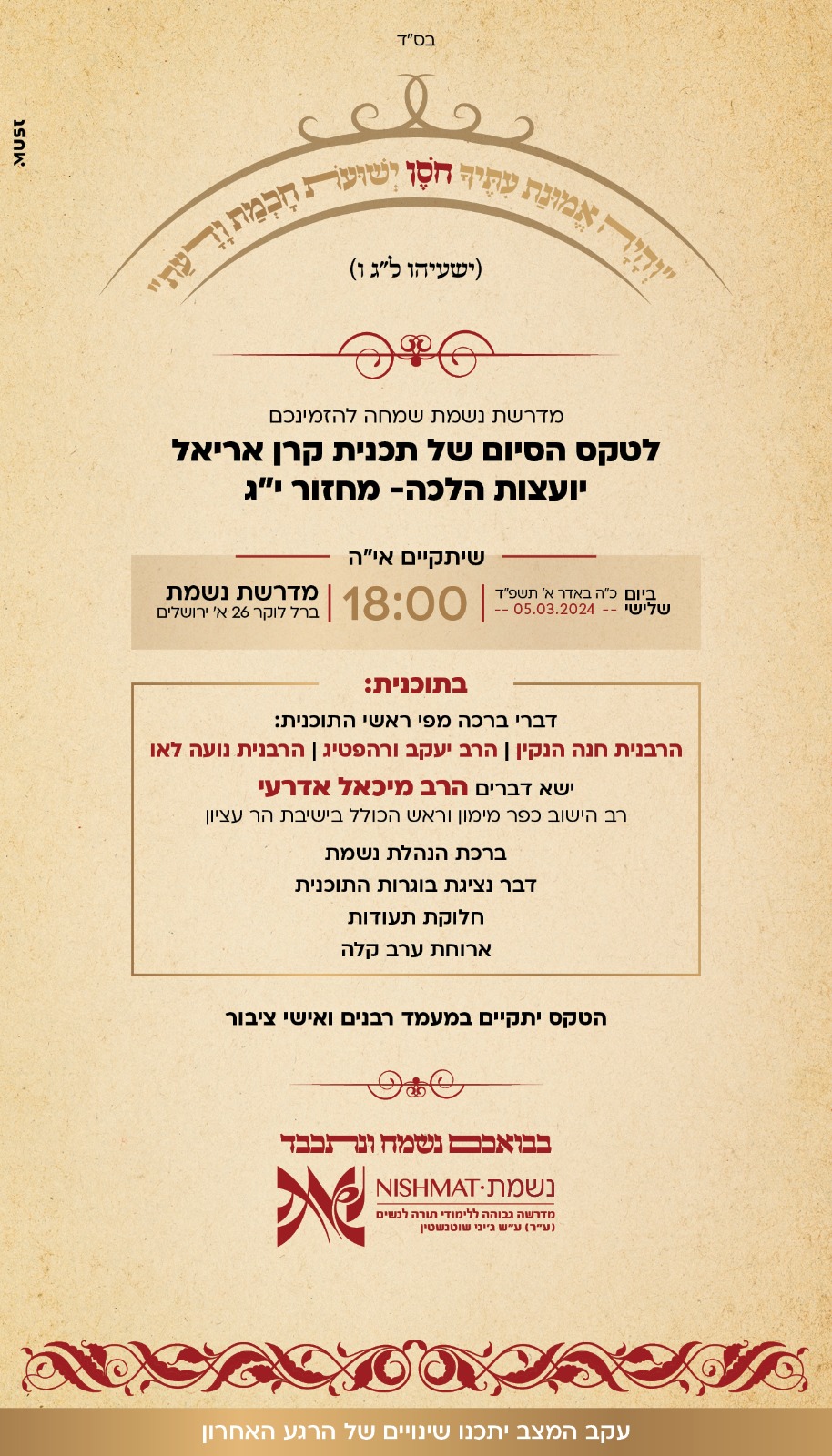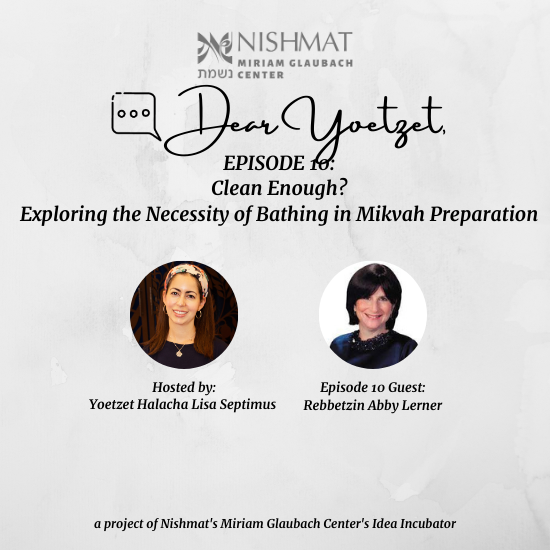Waiting between bedikot or after shower
7 May, 2017
 Question:
Question:I have a question about waiting before doing a bedika. I was taught to wait 10 minutes after a shower to do a bedika. I was also taught to wait a couple minutes between bedikot so that discharge would return and there would be something on the cloth to check.
I'm not asking about spacing bedikot to avoid irritation.
Is there an inyan to wait after a shower? Between checks? Is that halacha or chumra?
Can I do bedika after bedika one after the other to get a clean hefsek tahara?
Answer:It is preferable to wait a few minutes in between attempts at a hefsek taharah. Waiting allows for natural lubrication to return, which can prevent irritation from the bedikah. It also gives a more accurate sense of whether the woman has in fact ceased bleeding. For medical reasons, we usually suggest waiting about ten minutes where possible. But back-to-back attempts are halachically acceptable.
Similarly, a bedikat hefsek taharah may be performed right after washing, internal or external. When a woman cleans herself internally (as is desirable before a hefsek taharah), waiting around ten minutes may be healthier, since it allows time for some of the natural lubrication to return to the area, reducing the chance of irritation to the vaginal lining. Halachically, there may be some preference to wait a few minutes after internal washing, so that new bleeding will show up on the bedikah. But there is no halachic requirement to wait at all between even internal washing and the hefsek taharah.
In contrast, during the seven clean days, we are trying to confirm that a woman has not resumed bleeding. Therefore, washing that is clearly intended to remove blood is more problematic. Once, when daily bathing was not the norm, it was even recommended not to wash oneself at all during the clean days. Nowadays, people generally bathe or shower frequently, and it is acceptable to bathe during the seven clean days as usual. Internal washing is also permissible during the clean days. However, thorough internal washing, such as douching, should be avoided (unless one has a specific ruling for a particular case). We recommend waiting 15-20 minutes after washing before doing a bedikah, both so that it reflects what is really happening, and so as to allow the natural lubricants to return to prevent injury with a dry bedikah. That is a recommendation and not a strict halachic requirement.
Please write back with any further questions.
This internet service does not preclude, override or replace the psak of any rabbinical authority. It is the responsibility of the questioner to inform us of any previous consultation or ruling. As even slight variation in circumstances may have Halachic consequences, views expressed concerning one case may not be applied to other, seemingly similar cases. All health and health-related information contained within Nishmat's Women's Health & Halacha Web site is intended to be general in nature and should not be used as a substitute for consulting with your health care professional. The advice is intended to offer a basis for individuals to discuss their medical condition with their health care provider but not individual advice. Although every effort is made to ensure that the material within Nishmat's Women's Health & Halacha Web site is accurate and timely, it is provided for the convenience of the Web site user but should not be considered official. Advice for actual medical practice should be obtained from a licensed health care professional.
For further questions or comments: 
The Nishmat Women's Health and Halacha Site is a public service of Nishmat, The Jeanie Schottenstein Center for Advanced Torah Study for Women. This project and others like it are made possible by contributions from people like you. If you have benefited from the service, and wish to enable us to help others, click here to donate.
Users of Internet filtering services: This site discusses sensitive subjects that some services filter without visual indication. A page that appears 100% complete might actually be missing critical Jewish-law or medical information. To ensure that you view the pages accurately, ask the filtering service to whitelist all pages under yoatzot.org.






 Question:
Question:







